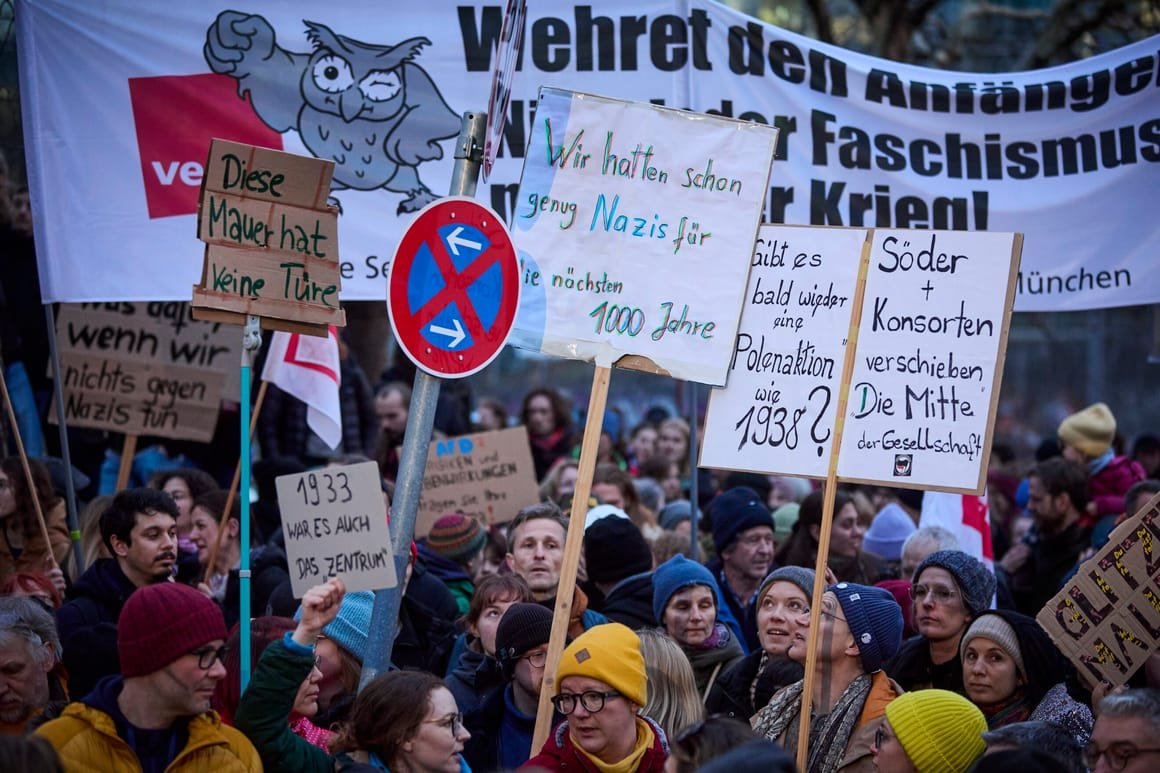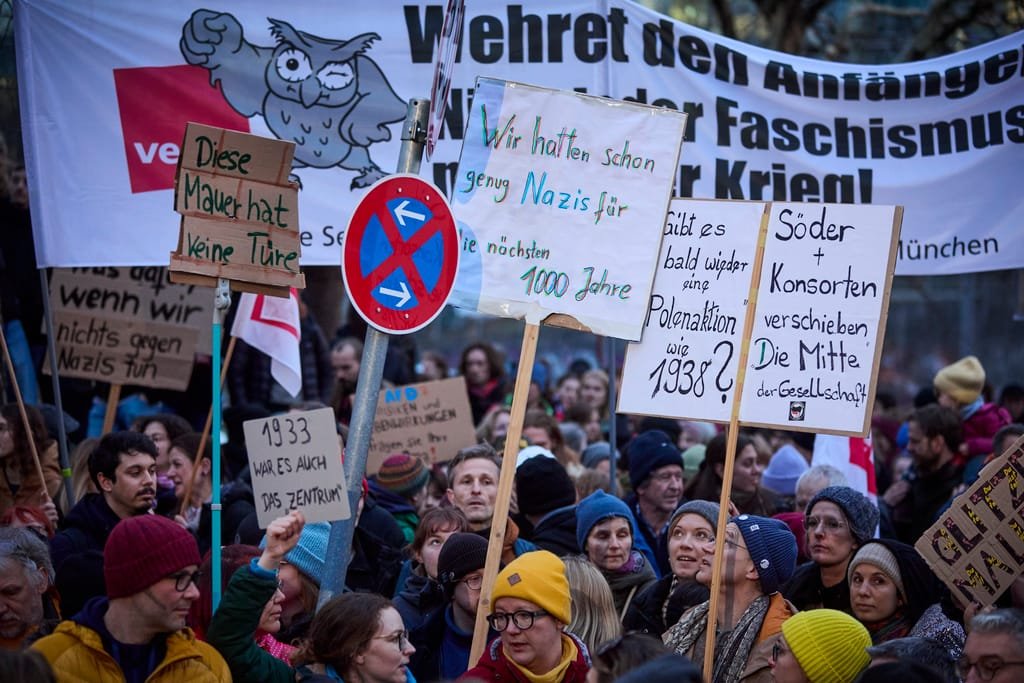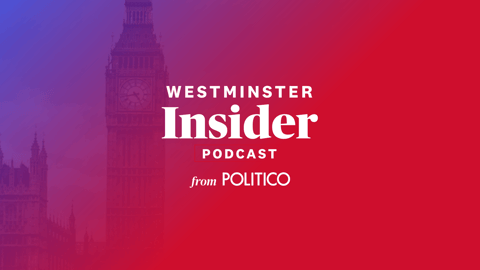POLITICO has processed 35 years’ worth of election data to find out why this month’s vote is messier than ever ― and what will happen next.

Germany: once so solid and predictable. Now, a bit of a mess.
And we’re not just talking about the economy.
A Feb. 23 snap election looks set to expose the fault lines beneath the country’s political landscape like never before, as its once-dominant center-right and center-left blocs start to crumble in the face of an ascendent far right ― as well as a smattering of smaller parties that are all fighting for votes.
While Germany hasn’t quite reached the level of chaos of Italy’s political system ― where 10 parties coalesced into four broad alliances at its last election ― it’s clear the country is flirting with fragmentation in a distinctly un-German way.
Amid one of the most volatile election campaigns the country has experienced, POLITICO dug deep into German federal election data since reunification in 1990 to identify the factors that will determine who gets the keys to the chancellery ― and, crucially, who gets to share power.
The stalwarts ― 71 years of postwar chancellors between them
The center-right Christian Democratic Union (CDU) and its Bavarian sister Christian Social Union (CSU) are most popular amongst churchgoing, older and rural voters.
The two parties have consistently won the first and second votes in 84 of Germany’s 299 constituencies since 1990 (or since the constituencies were established).
Although currently in opposition, the CDU/CSU duo has dominated postwar German politics, producing leaders from Konrad Adenauer in 1949 through Helmut Kohl to Angela Merkel, who stepped down in 2021. It’s now likely to return Friedrich Merz as the next chancellor.
The CSU has a stranglehold in Bavaria, while many of the CDU’s longest-held constituencies are in the neighboring state of Baden-Würrtemberg. These two southern states are economically developed, with Oberbayern (the region around Munich and home to Oktoberfest) having previously been named among the top 10 wealthiest regions in the EU.
Meanwhile, Chancellor Olaf Scholz’s center-left Social Democratic Party (SPD), although the biggest party in government since 2021, has managed to retain far fewer constituencies on a consistent basis than its center-right adversaries.
The SPD is more likely to be supported by women, and in 2021 achieved the highest support among age groups over 35.
Most of the seats the SPD has dominated since 1990 are located in North Rhine-Westphalia, specifically in the densely populated Rhine-Ruhr metropolitan region.
Political scientist Martin Elff compared the SPD to Britain’s Labour party.
“It emerged from the workers movement in the 1800s,” he said. “It is particularly strong in the Ruhr region because that region is one of the industrial cores of the German economy.”
The disruptors ― becoming steadily more popular
Established in 2013, the far-right Alternative for Germany first entered the Bundestag in 2017, when it came in third with 12.6 percent of the second vote. This time around it’s on course to pass 20 percent. Data shows that in 2021 the party was far more popular among men than women and found most of its success in the former East Germany. The party is particularly popular in the states of Thüringia, Saxony and Sachsen-Anhalt.
In 2021, while the number of constituencies the party won outright increased, its overall share of the national vote declined to 10.4 percent. While the AfD lost some of its muscle in the Bundestag, its foothold in the former East Germany strengthened.
With the AfD now polling in second position at around 20 percent, the so-called firewall ― a convention whereby mainstream parties refuse to work with the AfD, let alone enter a coalition with it ― is under more pressure than ever.
The possible kingmakers ― whose support is fragile
Germany’s Greens are one of the most successful green parties in Europe, playing the role of junior coalition member in three governments since 1998.
Despite broad success in the second vote at each election, until 2021 the party consistently won first votes in only one seat in Germany. But in the last election that all changed, with the Greens winning the first vote in 16 constituencies, and 14.7 percent of the national second vote.
The massive success of the Green Party in the last election was driven by votes from women, young people and its popularity in urban areas.
There are some signs in Germany of a backlash against green policies, however, both in the rhetoric being used in the campaign and in the party’s gradual fall in opinion polls. While its success from 2021 may not be replicated this time around, the Greens could still play an important role in coalition negotiations. Our story, Here’s what Germany’s next government will look like, explains how that would work.
The stragglers ― some old, some new
Several parties are polling below the AfD and the Greens at around the 5 percent mark. In Germany this is significant, because electoral law prohibits parties that get less than 5 percent of the second vote from being represented in parliament. The exception is if a party manages to win three constituencies in the first vote.
The Left Party ― further left than the mainstream SPD ― tends to rely on gaining over 5 percent of the second vote to ensure most of its representation in parliament. It had a disastrous performance at the last election when it only earned 4.9 percent of the vote ― but was saved by winning the first vote in three constituencies.
Subsequent infighting resulted in Sahra Wagenknecht breaking away from the party and establishing a rival, called BSW, which could carve away key voters.
BSW’s platform, Elff said, is a “unique combination of ideological elements … combining traditional left-wing positions regarding the economy and the welfare state with an unambiguous opposition to immigration.”
The European election of last June demonstrated the BSW’s popularity in the former East Germany, which is also where the Left Party and the AfD historically perform best. With this additional competition, the Left could be in for yet another nailbiter on election night.
Finally, it’s distinctly possible that Christian Lindner’s liberal Free Democrats (FDP) could be the biggest losers of this election. The FDP joined the coalition in 2021, with Lindner serving as finance minister. But Lindner was fired by Chancellor Olaf Scholz in November 2024, precipitating a crisis that led to the early election. The party now finds itself on the verge of falling off the political map.
Since 1990 the FDP has never won the first vote in a constituency, and has instead relied on relatively strong support across the second vote, especially in the west of the country.
The party enjoyed greater support among young voters, men and people in the west of Germany in 2021, earning just over 11 percent of the vote, but is now languishing in the polls dangerously close to the 5 percent threshold.
A little explanation
In case you’re confused by our references to first and second votes, here’s what you need to know:
Germans get two votes each. The Erststimme (first vote) goes toward a specific candidate in their constituency, and whoever gets the most votes wins. The Zweitstimme (second vote) goes toward a party list, with the percentage of second votes each party gets deciding the proportion of their representatives in the Bundestag.





